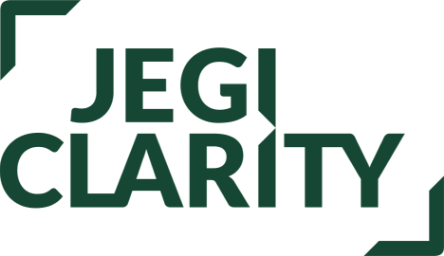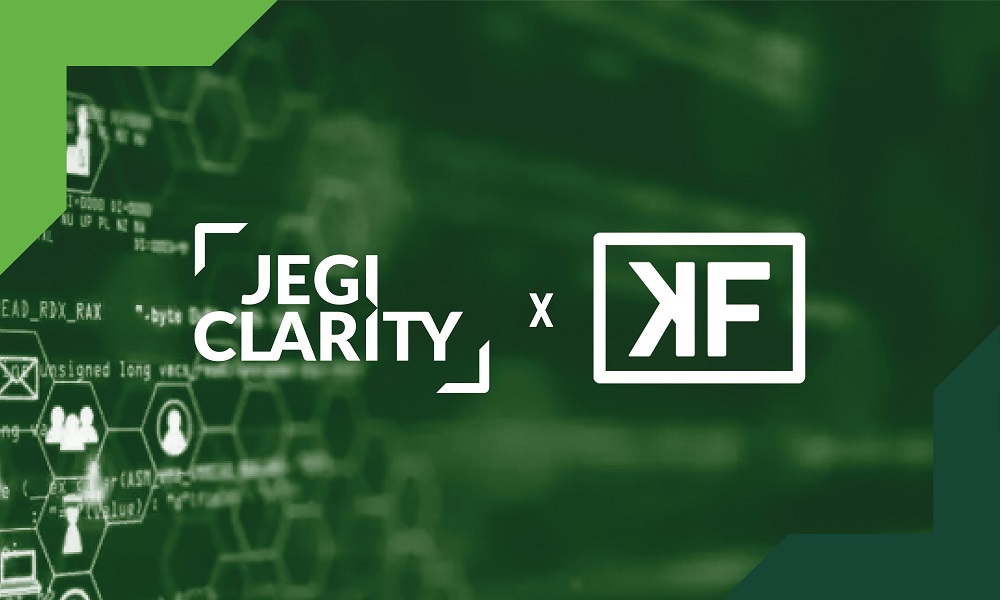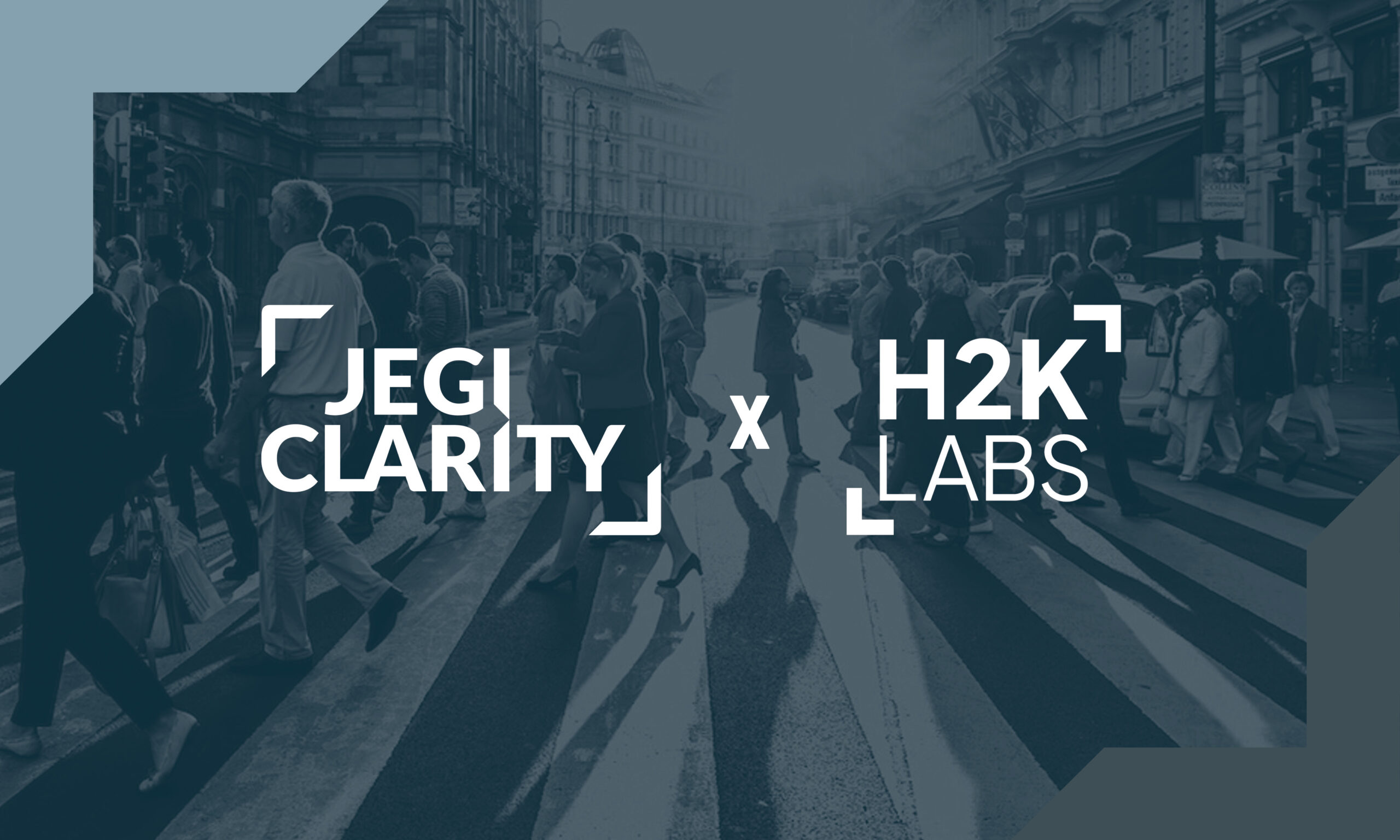JEGI CLARITY’s 19th Annual Media & Tech Conference, focused on ‘Maintaining a Winning Mindset,’ brought together senior executives and investors from across the global media, marketing, information, and technology sectors.
At the conference, Colin Morrison, Founder, Publisher & Editor of Flashes & Flames and Advisory Board member at JEGI CLARITY, interviewed Neil Vogel, Chief Executive Officer of Dotdash Meredith, America’s largest digital and print publisher. The article below was written by Colin Morrison and originally published in Flashes & Flames. Click here to receive more content from Flash & Flames.
Background
Neil Vogel is the Chief Executive Officer of Dotdash Meredith, the largest digital and print publisher in the US, whose 40+ brands include People, Better Homes& Gardens, Verywell, Food & Wine, The Spruce, Allrecipes, Byrdie, Real Simple, Investopedia, and Southern Living.
The company is a wholly-owned subsidiary of IAC, Barry Diller’s listed holding company whose “financially disciplined opportunism” has been responsible for the success of many digital brands including Vimeo, Expedia, TripAdvisor, Live Nation, Match Group, and Angi.
Prior to the $2.7bn acquisition of Meredith Corp in 2021, Vogel had been CEO of Dotdash and led its transformation from a general information website (About.com) to a portfolio of high-performing lifestyle verticals. In 2020, it had made $66mn EBITDA on revenue of $214mn, growth of 65% and 27% respectively. Its operations were characterized by: “Best content, fastest sites, and fewer, better ads”.
The all-digital publisher’s decision to acquire the troubled 120-year-old, print-centric Meredith surprised many. But Vogel had identified the value of its long-established magazine brands; the market-leading product licensing, generating an estimated $100mn of annual profit, principally from Better Homes & Gardens branded products in Walmart; and the constraints that had been forced on Meredith by its ill-fated 2017 acquisition of Time Inc.
But the CEO has admitted last year was a tough start for the “new” company: “These mergers are hard, and this was really hard and slow. In a good market, nobody sees your mistakes. In a bad market, everyone sees every mistake.”
Dotdash Meredith now claims some 170mn online consumers in the US each month (76% of all adults and 90% of women). That makes it a top 10 internet operator alongside Disney, Warner Media, Paramount and Comcast/NBC – and larger than Hearst and Condé Nast combined. Its largest sectors are: Food (Allrecipes, Food & Wine), Entertainment (People), Home (Better Homes & Gardens, Southern Living) and Health (Verywell). Its pro forma revenue for 2022 was $2.3bn, 60% from ads, 20% from eCommerce and 13% licensing. For Q4, digital accounted for 54% of revenue and 85% of profit, emphasizing the digitalization of the Meredith portfolio.
Before joining IAC / Dotdash in 2013, Vogel was Founder and CEO of Recognition Media, a producer of award shows including the Webby Awards and the Telly Awards. Previously, he had been an executive at digital content and marketing company Alloy, and an investment banker. He had graduated in finance from the Wharton Business School at the University of Pennsylvania.
How did you get into media?
When I realized I was not going to be the starting shooting guard for the Philadelphia 76ers, I had to take a different course. I was an investment banker for a number of years. I actually very much enjoyed it, but I found myself wanting to be a client, not one of my bosses. I joined a very early internet company called Alloy. They ended up going private and selling it off and we had a pretty good run.
Then I left and got into more nuts and bolts media businesses. I started a company, Recognition Media, that rolled-up media and advertising award shows which we eventually sold to private equity. Then I joined a venture capital firm FirstMark Capital as an entrepreneur in residence. But I was a terrible investor. It’s not my temperament or my skillset.
How did you come to join IAC?
I knew the guys at IAC, which now owns Dotdash Meredith. At the time, they had just bought About.com from the New York Times.
That was probably one of the worst scaled internet businesses in history. They called me to see if I knew anyone who could run it, and I said ‘Well, wait, that looks interesting,’ and I persuaded them to let me do it. About.com was a general information website, much like an old fashioned service magazine publisher. But it was one brand, a lot of content, and the vast majority of the content was pretty bad. But it still had 20-30mn users a month and I thought we could do something with it.
The one thing I couldn’t understand was that there were still advertisers – companies like Microsoft and Carnival Cruises – paying us exorbitant amounts of money to advertise on a platform where the ads really didn’t work that well. The content was not presented in a great way. But, because my background was not publishing but more like banking and math, I came to realize that our users were at the very bottom of their decision funnels (whether they were ready to solve a problem or make a purchase) and so that was a very good place for some advertisers. When people are searching “What do I bring on my cruise?” that’s a good place for, say, Carnival Cruises to be.”
With that bit of knowledge, I went to Barry Diller. For those who know him, you’ll know that I did not have the easiest conversation when I said: “This thing that we bought is totally wrong. We’re going to throw out almost two-thirds of the content and we’re going to launch a whole bunch of brands to compete against household brands that you’ve known for a hundred years – on the internet, which seems like a bad place for publishers.” His response was: “Well, this hasn’t been working for so long. It’s about time. You guys have an idea that’s worthwhile doing.”
So we took About.com, broke it up and launched a whole bunch of sites including Verywell Health and The Spruce in Home. We almost instantly had very big success, simply because we had looked at the internet differently. We said we’re going to make fast sites, every bit of content we make is going to be amazing, we’re going to have fewer ads so they perform better and don’t annoy consumers, and it’s going to work. We immediately turned the business round and made some acquisitions. We bought Brides from Condé Nast, Byrdie (a beauty site) from an entrepreneur, and some food sites. Suddenly, we went from 30mn users a month to more than 100mn.
Dotdash went from 60 or $70mn in revenue to almost $300mn. We went from losing money to close to $100m EBITDA. We realized that we had become very, very good at publishing on the internet.
Why did you acquire Meredith?
Dotdash had achieved this rapid growth at a time when everybody thought publishing was broken. Publishing is not broken, bad publishing models are broken. But the thing that we didn’t have was major brands. While The Spruce grew to be the biggest home site on the internet, bigger than Real Simple, Good Housekeeping and Better Homes & Gardens, nobody really knew what it was.
IAC really believes in the power and value of major brands so we persuaded it to acquire Meredith Corp for $2.7bn.
Our whole thesis was that this historic business had structural issues that caused it to be very cash constrained and not that able to invest in growth. We thought that, if we could take what we knew digitally and apply it to these incredible brands – People, Better Homes & Gardens, Travel and Leisure, Real Simple, Food & Wine, Entertainment Weekly – we could do to them what we had done to the brands we had re-invented from About.com.
We thought we could have tremendous success and we still feel that way. We happened to buy at a relatively tough time for the ad market. But, long term, that doesn’t matter. We’re now the biggest digital and print publisher in America, probably in the world. We have a whole bunch of print assets too, that we actually like and they fit as part of the mix. We’re by far the biggest publisher online. We like our brands and our scale. Our content really performs and, though the integration has been hard, we’re getting there.
The opportunity to acquire Meredith arose essentially because of its problems with the purchase of Time Inc six years ago. Had Dotdash / IAC also tried to acquire Time Inc back in 2017?
When Meredith bought Time Inc, we were actually too small to do anything. But we forced ourselves into the room to see what we could learn. Meredith had made a choice to double down on print: one print publisher was buying another print publisher and hoping to wring more money out of print.
Some of our people jokingly called it “print on print violence”, and it didn’t work. I don’t really have an opinion on what happened before we got there, but I think the results speak for themselves. We paid significantly less than what the combination of Meredith+Time Inc would have been worth at the time they did it.
For us, though, it certainly wasn’t about buying either print or digital; it was about buying brands. What we saw in Meredith was a company with some very talented people but which was a dividend-driven, essentially a family-controlled business, not really exposed to the latest thinking. We’d just been through this exercise with the About.com assets plus the seven or eight brands we had bought. We knew exactly what to do with these legendary Meredith brands, to fix them on TikTok, on Instagram and – more importantly – on the web.
We also had a very good idea of what to do with print because you just have to make magazines that people are willing to pay for, that are high quality – and that will work. We probably had a touch of irrational arrogance because of our previous success. If we get this right, I think we can be a category-defining publisher for where media’s going.
How did People – the biggest and most profitable Meredith brand – fit your strategy?
We’ve always said – and I think it’s something unique to us – that we’ve always stuck to our knitting and said we are going to be a service publisher. That means health, finance, home, food, tech, travel. We are never going to do news, we’re never going to do politics, we’re never going to do User Generated Content. I mean, we do it in recipes but that doesn’t count. That’s not what we do. Nothing we produce puts you in a bad mood or gives advertisers concern. You’re never going to have an opinion piece. No one stops me on the street and yells at me because maybe they didn’t like a recipe on Food & Wine!
Would you really have bought People if it had not been part of Meredith?
Maybe. We’d never said we wouldn’t buy entertainment, but it’s a little bit different than everything else we do. We like things that are ‘down funnel’ intent. We had to take a very hard look at People before we bought it because it was such a meaningful part of the portfolio. What we found was that, with the entertainment type businesses, you must have readership scale otherwise the audiences are simply worthless to advertisers. But that’s what we have. People is 4x bigger than the next biggest entertainment sites, the Daily Mail and TMZ.
We basically knew it had the scale and that – if we did a good job – there was an intent-based kernel in there, because some 35% of the traffic comes from search. Our ad sellers were very excited to have People as part of a sales package because it sprinkles stardust on the portfolio. If you’re talking to a soup company, allowing them to do something at the Academy Awards can be very helpful. So, we bought People with our eyes open. It’s actually probably been our fastest-growing audience. Super-interestingly, the People team came up with the definition of their brand: “People means ordinary people doing extraordinary things and extraordinary people doing ordinary things.”
What we have ensured is that the print, social media and web content is distinct because the audiences are. In print, you can put the Queen on the cover and write a million stories about Julia Roberts and they do great. On the internet, it’s Kim Kardashian and what was on TV last night. If you try and put George Clooney on TikTok, no one even knows who he is. But the thread is quality journalism for entertainment, which means nothing salacious, no rumors, no gossip. Just a different kind of person for a different kind of audience. We’ve spent the last year transitioning, which has been fairly brutal, trying to do that in all of our brands and understanding what people want. Food & Wine, the print magazine is about experiences. You want to read it while you’re watching TV or whatever. The internet is recipes and social is, “How do you make a Popsicle explode?”
Once you understand that and realize you can do this all from the same brand voice, it gives you super-freedom.
We have these amazing editors from Meredith who had felt restricted in what they were able to do. They are now just bursting with ideas. It’s been a real education for us, learning from them. We are now at the point where all of the brands with print (six of them) have ‘brand editor-in-chiefs’ responsible for the brand mission. They have no operating control over digital, but the effectiveness of this brand-led approach has been a revelation.
How much of Dotdash Meredith is now print?
It’s a much bigger share of revenue than of profit because of the nature of print. We’ve said publicly that, in Q4 last year, 54% of the revenue and 85% of EBITDA profit was from digital. We’ll print probably half as many magazines next year as we did last year but the profitability is going to look pretty much the same. We’re in a really nice cadence where both the ad business and subscriptions on print are pretty good.
We invested heavily in the print properties we kept, so we raised news stand and subscription prices by about 20%. That seems to have all been accepted. We’re excited about it because there’s still a magic in print brands. I’ve been meeting these CMOs and they still love print and they have a lot of data that says it’s still very effective. It’s just you have to realize it’s not for everybody. It’s not going to be a growth engine, but it’s still a really nice contribution business.
What are your principal digital revenue streams?
Advertising is our biggest piece of business and the ad market’s been fairly rough because there’s so much uncertainty. It’s been a challenging environment.
However, a large – and probably the fastest growing – piece of our business is transactional, which is effectively like a guides ratings reviews business. Readers trust Food & Wine for their recipes so they trust them also to tell them which blender to buy. We have 53 test kitchens in Birmingham, Alabama and 100,000+ square feet of product testing space in Des Moines, Iowa. We do comprehensive consumer report-style user tests across everything from throwing luggage off a loading dock to figuring out what is the best blender for a small kitchen. That’s been a real bright spot.
It’s a great business to be in. The people who do the tests and reviews are deliberately independent of any economic arrangements we make with the brands. If we say we have the best brands in the world and they’re really trusted, we should absolutely be able to recommend luggage on Travel and Leisure and blenders on Food & Wine, and we should also be able to tell our readers how they can buy the dress that Jennifer Aniston wore last night in People.
This is a very big and growing business for us digitally. We also have a large licensing business, but the only reason it works is because people love the content. We spend heavily on content and, again, it’s one of those things we tell our people: “Don’t worry about the money, make amazing things, build great audiences, and the revenue will come.” There’s obviously a lot of us who do worry about the costs and revenue, but not our people making the content.
Product licensing was one of the standout, best-in-class successes of Meredith. For more than 20 years, it had been way ahead of its larger rivals in putting magazine brands on licensed product. Is this long term revenue stream now a game changer for you?
We have a very big, longterm partnership with Walmart which sells everything from candles to sheets under the Better Homes & Gardens brand. These products are bestsellers. We love this licensing because it’s great business but also because it’s brand validation. If your brand can carry off that many consumer product sales and have that much consumer trust at Walmart, it’s pretty incredible.
We are in the process of expanding this licensing with many of our other brands, including Southern Living and Brides, for the long term. It’s a great way to monetize our brands.
The next time you are in Walmart, look at Better Homes & Gardens products. It’s an amazing range of bestsellers. We now give everyone on the editorial team at Better Homes & Gardens a $500 quarterly allowance to buy whatever they want from “their” range at Walmart.
What about subscriptions?
We have 11mn print magazine subscribers, but that’s a different business. We have not done subscriptions in any material way across our other properties. We’ve obviously thought a lot about this. But, in order to be a successful subscription product, you generally have to have daily use and many or most of our properties are not that. You need them when you need them and you don’t when you don’t. Also, our whole business is built on scale and subscriptions would tend to limit the audiences.
If consumers are going to pay for things, it generally has to be part of a bundle or part of something. In our sectors, we have made the decision not to be subscription-driven. Our primary revenue is going to be advertising, sponsorship, and eCommerce. But we’re still learning and some of the Meredith people have made a strong case for is experiments because we do have 12mn subscribers who are willing to pay for content.
How important are podcasts?
We do a few. Southern Living has a very big podcast and so does our Verywell Health brand. We probably have 15-20 podcasts across the company, and two or three are large. We don’t do podcasts just to do them. But take the “Biscuits and Jam” one for Southern Living, Sid Evans, the Editor-in-Chief, takes all kinds of southern musicians and just talks about Southern culture. It’s an amazing podcast and does very well. We also have a very big mental health podcast. It’s early days but podcasts are interesting.
How will AI impact your company?
We could do five hours on this! I think there’s been lots of threats to our business in the 10 years we’ve been here. But this is the first thing that could be truly existential if not done correctly and properly. The thing to keep your eye on, as a publisher, is it’s an incredible tool. It’s the greatest analytics tool ever and it’s helping us. We’ll never use it to write content, but it’s helping us figure out what to make in a way that is mind-blowing.
The part of it that no one really knows what’s going to happen (and Barry Diller, has been fairly outspoken on some of these issues) is that the world has been conditioned to use the search bar to get information. People’s behavior can change or not change, but I think that’s where we are for now. Google dominates search so what it does with the search results is going to be the single thing that affects American consumer businesses more than anything else going. Because that is what’s going to happen. If AI disrupts that process in some way, our business is going to change. No matter who you are, because Google is a material part of the traffic.
What’s your vision for Dotdash Meredith in, say, five years?
I’ll be working for the robots! I think we’re in a really interesting place. We’re the biggest publisher in terms of scale. I’m biased but I believe we also have the very best brands in the world. We’re very good at the new-ish channels and our ads perform incredibly well because very simply… If you put three ads on the page instead of six, they do way better. We have a chance to redefine what we’re doing in terms of share of revenue and share of voice. Because we have platform-level scale, we’re now competing with Meta and we’re competing with CTV and we’re competing with all these other channels. If we can do all of this in a brand-safe environment and guarantee that the ads perform, I believe we have a chance to really redefine what a publisher is.
We’re very good at technology. But we make content that people love and we make it accessible and we aggregate these great audiences and connect them to advertiser-vendors. This is a business that has existed for a hundred years. Better Homes & Gardens is 101 years old now. It’s not brain surgery, it’s “just” execution but it’s difficult. It’s hard. But we put in the work and I like our chances.
For more information about our conference please click here.






